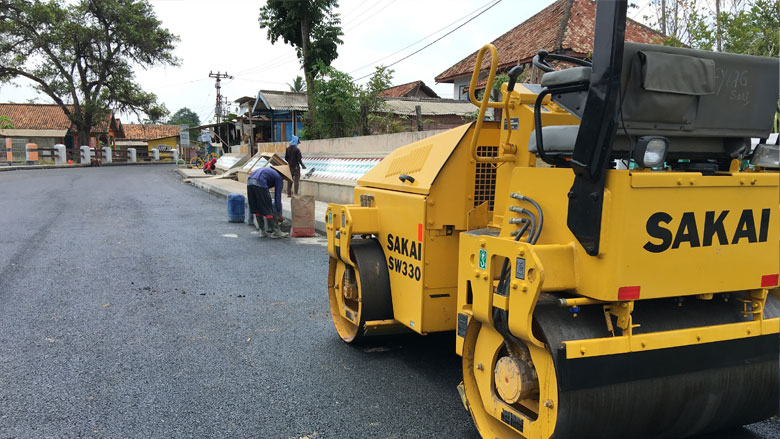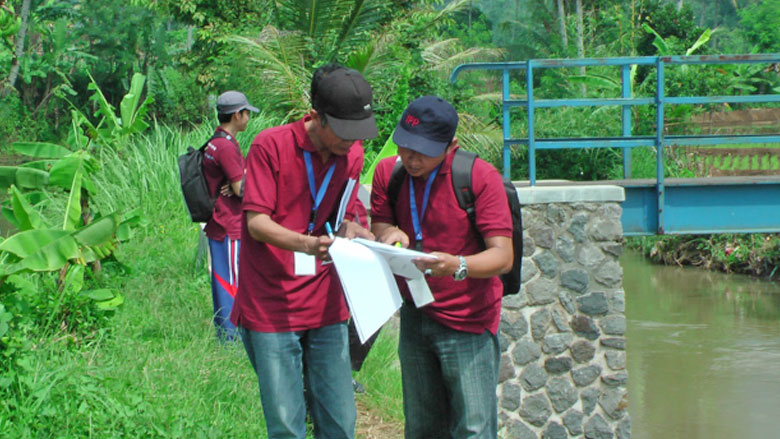Synopsis
The Local Government and Decentralization Project, or LGDP, aims to strengthen the delivery of the grant transfers to local governments, called the Specific Purpose Grants, or DAK, so that these transfers are more efficient and used more effectively. From 2011 to 2014, a total 78 local governments built 1,467 units of infrastructure, including roads, water and sanitation facilities, and irrigation works, with the delivery verified by the Government of Indonesia’s Internal Audit Agency, known by its Indonesian acronym BPKP. The LGDP offers incentives to local governments for spending the DAK effectively, and has also developed a web-based reporting system. With many local governments improving accountability, the LGDP was approved in late 2014 for additional financing, so that the project can expand to cover 30 provinces and 450 local governments
Challenge
In 2011, democratization in Indonesia also marked the start of the country’s decentralization. Today, the country is comprised of more than 500 autonomous local governments that are highly dependent on fiscal transfers from the central government, but also have the potential to accelerate growth in the districts. In 2012, over 32 percent of the central government’s budget was transferred to local governments, and these funds make up over 90 percent of local government budgets. The DAK is explicitly designed to fund infrastructure investments, and account for around 20 percent of all public spending on infrastructure in Indonesia. But there was no systematic framework to monitor and evaluate the effectiveness and accountability of DAK expenditures. Regardless of past performance or the lack thereof, local governments received their allocated DAK transfers. Performance-based incentives were urgently needed to encourage local governments to improve their performance.
Approach
The LGDP links DAK disbursement to output, specifically in the number of infrastructure units being built, such as roads, water, sanitation, and irrigation. The government’s internal auditors, the BPKP, are assigned to independently verify the construction of the units, and the verification report forms the basis for reimbursements to the local government. To improve reporting and accountability, a Web-Based Reporting System, or WBRS, was developed for the project, through which local governments must submit their financial and technical progress reports on DAK implementation throughout the year. The LGDP also provides incentive payments to local governments that perform well. In addition, through an ongoing series of institutional support activities, including training on technical, fiduciary and safeguards issues, the LGDP strengthens the capacities of local governments and the BPKP.
Results
The LGDP – involving 78 local governments across 5 provinces in the Project’s the first phase – has enabled the government to improve the effectiveness and accountability of DAK transfers to local governments. Results include:
- Improved reporting accountability, with more than 80 percent of the 209 participating local governments submitting their financial and technical reporting on DAK, using the WBRS. The online reporting system’s high rate of success has prompted the the government to expand the use of the WBRS nationwide. Significantly, the scope of the WBRS has also been broadened, so that it can monitor the spending of all DAK transfers beyond infrastructure.
- From 2011 to 2014, the BPKP verified 1,467 DAK infrastructure contracts in participating local governments. Based on this verification, as of December 2015, the LGDP’s cumulative reimbursement of DAK outputs totaled $265.9 million. This reimbursement represents around 59 percent of the government’s overall DAK infrastructure spending in participating local governments during this period.
- In 2014, the state auditor BPKP verified infrastructure investments worth some $77.7 million, undertaken by 78 local governments. Based on the verification results, $43.2 million was reimbursed to the government, and incentives amounting to $4.3 million were disbursed to participating local governments.
- In August 2016, the BPKP is expected to showcase the verification methodology and results to other countries in the East Asia and Pacific region, The Ministry of Finance is also expected to share the LGDP’s best practices in monitoring and evaluation to the region.

